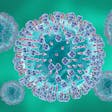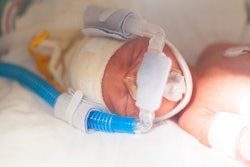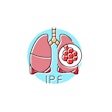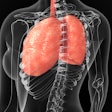
A new study from Tulane University suggests that repeated collapse and reopening of tiny alveoli during mechanical ventilation may cause microscopic lung tissue damage.
Published in the Proceedings of the National Academy of Science (PNAS), “Mechanical Ventilation Energy Analysis: Recruitment Focuses Injurious Power in the Ventilated Lung” sheds light on ventilator-induced injury. This complication gained increased attention during the COVID-19 pandemic, which led to a surge in patients requiring ventilator intervention.
Researchers identified that alveolar recruitment/derecruitment — when collapsed air sacs in the lungs repeatedly open and close — accounts for only 2-5% of energy dissipation during ventilation but correlates with lung injury in a model of acute respiratory distress syndrome (ARDS).
 Donald P. Gaver, PhDTulane University
Donald P. Gaver, PhDTulane University
ARDS is a severe lung condition that affects roughly 10% of intensive care unit (ICU) patients and carries a mortality rate of 30-40%, even with modern ventilation techniques. The team used a pig model of ARDS to examine how ventilator energy is transferred and dissipated in the lungs.
The researchers found that reducing this type of energy dissipation led to rapid recovery, while patients continued to deteriorate when 5-10% of alveoli underwent repetitive recruitment/derecruitment. This indicates that minimizing these recurring collapse-and-reopening cycles could significantly reduce ventilator-induced lung injury.
The team also noted that adjusting ventilation strategies to prevent such events may improve outcomes for critically patients. Dr. Gaver and colleagues hope the study’s findings can help inform the development of new ventilation protocols aimed at reducing lung injury and improving patient care in ICUs worldwide.
“Follow-up steps should include developing real-time monitoring devices to quantify reopening events and integrating this data into treatment strategies to optimize ventilation and improve patient outcomes,” Dr. Gaver said.
This research was completed in collaboration with the University of Vermont, the State University of New York Upstate Medical University (SUNY) and the University of Maryland Shock Trauma Center.






















